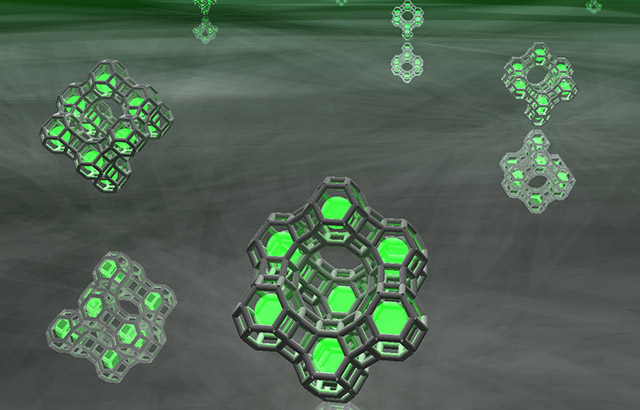
Artist impression of small clusters of silver atoms (green spheres) trapped in zeolite cages. Credit: Dr Oliver Fenwick
Writing in the journal Nature Materials, the international group of scientists modified a mineral called zeolite, more commonly found in washing powder, to incorporate tiny clusters of silver atoms.
At this very small scale (less than 10 atoms), the silver clusters act very differently and can even emit light.
Lead author Dr Oliver Fenwick from QMUL’s School of Engineering and Materials Science, said: “We’ve shown that silver atoms can be assembled in the porous framework of minerals known as zeolites with a level of control not reported previously. This has allowed us to tailor very precisely the properties of the silver clusters to meet our needs – in this case an efficient phosphor.
“The high efficiency of the materials along with cheap, scalable synthesis makes them very attractive as next generation emitters for fluorescent lamps, LEDs and for biological imaging, for example for highlighting tumours or cell division.”
Zeolites are porous minerals that can be found naturally or produced synthetically on an industrial scale. They are rigid and have a well-defined framework made of molecular-scale channels and cavities.
The researchers from Université de Strasbourg in France, where Dr Fenwick was based when carrying out the study, and KU Leuven in Belgium manipulated the characteristics of the zeolite pores to fine-tune the properties of the clusters of silver. By tailoring of the zeolite host, they demonstrated luminescence efficiencies close to 100 per cent.
This research is funded by the European FP7 project “Self-assembly in confined space” (SACS) and involves Université de Strasbourg in France and KU Leuven in Belgium.




